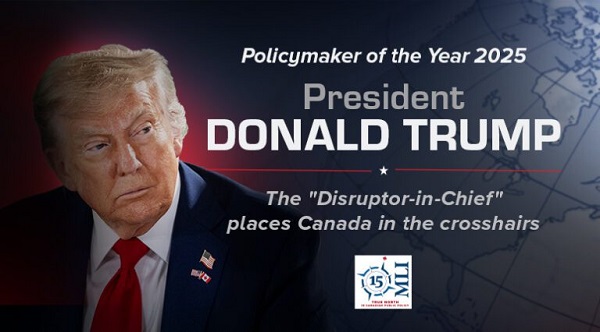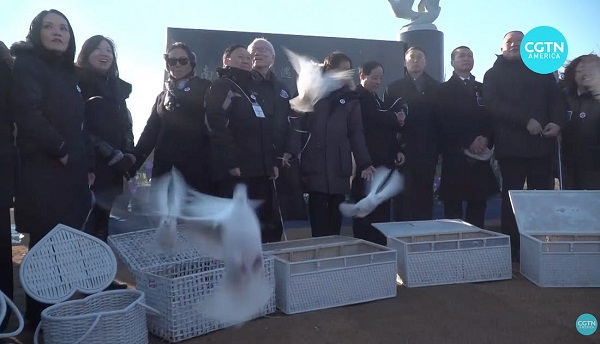Also Interesting
What new industries has crypto inspired in Canada?

Cryptocurrency is a digital asset that uses encryption techniques to secure and verify transactions, as well as to control the creation of new units. The most well-known cryptocurrency is Bitcoin, but there are many other digital currencies in circulation. Unlike traditional fiat currencies, cryptocurrency operates independently of central banks and is decentralized, meaning that it is not subject to government control or regulation.
The rise of cryptocurrency has sparked the creation of many new industries in Canada, as businesses and entrepreneurs seek to capitalize on the growing popularity of digital currencies. These industries range from finance and real estate to e-commerce and online gambling, and have the potential to transform the Canadian economy in significant ways.
In this article, we will focus specifically on one of the new industries that has been inspired by cryptocurrency in Canada: crypto casinos. We will explore what crypto casinos are, how they work, and why they have become so popular in Canada. We will also compare crypto casinos with traditional online casinos and discuss the advantages of using cryptocurrency for online gambling. Finally, we will provide some examples of popular crypto casinos in Canada and explain how this industry is likely to continue to grow in the future.
Overview of the Canadian Crypto Landscape
Canada has been involved in the cryptocurrency space since its early days. The first Canadian Bitcoin exchange, Cavirtex, was launched in 2011. Since then, the country has seen a surge in crypto adoption, with many businesses and individuals embracing digital currencies for a variety of purposes. In addition to Bitcoin, other cryptocurrencies like Ethereum, Litecoin, and Ripple have also gained popularity in Canada.
In Canada, cryptocurrency is considered a commodity and is subject to the oversight of the Canadian Securities Administrators (CSA). The CSA has issued guidelines for businesses that operate with or invest in digital currencies. In addition, the Financial Transactions and Reports Analysis Centre of Canada (FINTRAC) requires that cryptocurrency exchanges and other businesses that deal with cryptocurrency comply with anti-money laundering and know-your-
customer regulations.
According to a 2020 report by the Bank of Canada, the estimated value of Canadian cryptocurrency holdings was approximately CAD 6 billion. The report also noted that cryptocurrency transactions in Canada have been increasing steadily, with the majority of transactions involving Bitcoin. In addition, the report highlighted that Canadian blockchain poker has emerged as a new and innovative use case for blockchain technology in the gambling industry.
Blockchain poker is a relatively new development that uses blockchain technology to provide a secure and transparent platform for online poker. The use of blockchain ensures that the game is fair and transparent, and that players can trust that their funds are secure. This has made Blockchain poker a popular option for online gamblers in Canada and beyond.
Overall, the Canadian crypto landscape is vibrant and growing, with many new and innovative use cases for digital currencies and blockchain technology emerging all the time. As more businesses and individuals embrace cryptocurrency, it is likely that the Canadian crypto market will continue to expand and evolve.
The Rise of Crypto Casinos in Canada
Crypto casinos are online gambling platforms that allow users to play various games using digital currencies. These casinos are similar to traditional online casinos in terms of the types of games offered, but they use cryptocurrency instead of traditional fiat currencies. Crypto casinos use blockchain technology to secure transactions, ensuring that they are transparent and verifiable. Users can deposit and withdraw funds in a variety of cryptocurrencies, including
Bitcoin, Ethereum, and Litecoin. As for Dogecoin, it depends on the policies of individual crypto casinos, but some do accept it as a form of payment.
There are several differences between crypto casinos and traditional online casinos. One of the main differences is the use of digital currencies instead of traditional fiat currencies. This allows for faster and cheaper transactions, as well as greater anonymity for users. Additionally, crypto casinos often offer a wider range of games than traditional online casinos, as well as more generous bonuses and rewards.
In terms of game fairness, crypto casinos often use provably fair algorithms, which allow users to verify the outcome of each game and ensure that it is not rigged against them. This level of transparency is not often seen in traditional online casinos.
There are several advantages to using cryptocurrency for online gambling. First, the use of digital currencies allows for faster and cheaper transactions, as there are no intermediaries involved. This means that users can deposit and withdraw funds quickly and easily. Additionally, the use of cryptocurrency provides greater anonymity for users, as they do not have to provide personal information to the casino. This is a significant advantage for users who value privacy
and security.
Another advantage of using cryptocurrency for online gambling is the potential for greater rewards. Many crypto casinos offer generous bonuses and rewards for users who deposit and play with digital currencies. These bonuses can be significantly larger than those offered by traditional online casinos, providing users with more opportunities to win big.
There are several popular crypto casinos in Canada, including BitStarz, 7Bit Casino, and mBit Casino. These casinos offer a wide range of games, including slots, table games, and live dealer games. They also accept a variety of cryptocurrencies, including Bitcoin, Ethereum, and Litecoin. Some of these crypto casinos may also accept Dogecoin as a form of payment, depending on their policies.
In conclusion, the rise of crypto casinos in Canada is a clear indication of the growing popularity of digital currencies and the potential for blockchain technology to disrupt traditional industries. As more users embrace cryptocurrency and online gambling, it is likely that the demand for crypto casinos will continue to grow, and more casinos may begin to accept alternative and people will get used to availability of different cryptocurrencies and supports will not be receiving questions like: Is Dogecoin still accepted? and other similar questions.
Blockchain and Finance Industry
Blockchain technology has had a significant impact on the finance industry in Canada, offering numerous benefits such as improved efficiency, transparency, and security. One of the most notable impacts of blockchain technology on the finance industry is the emergence of decentralized finance (DeFi) platforms, which use blockchain to create decentralized networks for financial transactions.
In addition to DeFi platforms, blockchain technology is being used to streamline traditional financial processes, such as payment processing, remittances, and cross-border transfers. Blockchain is also being used to improve identity verification, data management, and fraud prevention in the finance industry.
There are several companies in Canada that have emerged as a result of blockchain technology in the finance industry. For example, Wealthsimple, a Toronto-based fintech company, has launched a cryptocurrency trading platform that allows users to buy and sell Bitcoin and Ethereum. Another example is Bitvo, a Calgary-based cryptocurrency exchange that offers fast and secure trading of Bitcoin, Ethereum, and other digital currencies.
Other companies in Canada that are leveraging blockchain technology to disrupt the finance industry include Blockstream, which provides blockchain-based solutions for financial institutions, and Polymath, which offers a platform for creating and managing security tokens.
The benefits of blockchain technology in the finance industry are numerous, including increased efficiency, transparency, and security. Blockchain technology can facilitate faster and more secure financial transactions, reduce costs, and improve compliance with regulations. Additionally, blockchain can help reduce fraud, improve data management, and provide greater transparency to users.
However, there are also challenges associated with the adoption of blockchain technology in the finance industry. One of the main challenges is the lack of standardized regulations and compliance frameworks, which can create uncertainty for companies operating in the blockchain space. Additionally, the scalability and interoperability of blockchain technology are still being developed, which can limit its ability to replace traditional financial systems in the short term.
Conclusion
Cryptocurrency has inspired several new industries in Canada, including crypto casinos, blockchain-based financial services, real estate transactions, and e-commerce. These industries offer new opportunities for innovation, disruption, and economic growth.
The potential for future developments in cryptocurrency and related industries in Canada is significant. With the continued growth and adoption of digital currencies, it is likely that we will see more companies and industries adopting blockchain technology and new ways of doing business. Additionally, the development of new technologies, such as decentralized finance (DeFi), can lead to further innovation and disruption in the financial services industry.
The impact of cryptocurrency on the Canadian economy has been significant, with the rise of new industries and increased economic activity. The use of digital currencies has provided new opportunities for businesses and consumers, offering greater efficiency, security, and transparency in transactions. However, there are still challenges to be addressed, such as the need for standardized regulations and compliance frameworks to ensure the safe and secure use of digital currencies. As the use of cryptocurrency and blockchain technology continues to grow, it will be important for policymakers and businesses to work together to ensure the continued growth and development of these new industries.
Also Interesting
How Australians Lose Thousands Each Year on Gaming and Gambling Mistakes

7 Everyday Money Mistakes Aussie Players Make in 2025
Every punter reckons they’ve got their spending under control until the bank app shows a very different story. From late-night spins to $150 skin drops in Fortnite, the little “harmless” hits add up stupidly fast. Anyone wanting the real picture on where the dollars actually disappear should bookmark https://onlinecasino-in-australia.com/ – it breaks down the maths behind every bonus and withdrawal so nothing is left to guesswork.
1. Chasing Losses After a Bad Session
Classic rookie move. Drop $200 on a cold night and immediately fire another $300 trying to get even. Next morning the account is $500 lighter and the mood is cooked.
2. Buying V-Bucks, Apex Coins or FIFA Points on Impulse
A new Battle Pass drops, the mates are all grabbing the shiny skin, and suddenly $79.95 is gone for something that literally vanishes when the season ends. In 2025 the average 18–34-year-old spends $420 a year on console/PC cosmetics that have zero resale value. That same cash parked in an ING saver would be $450 with interest by Christmas.
3. Ignoring Bonus Wagering Requirements
Grab a fat welcome offer from an online casino Australia without reading the fine print and the “free” $500 is locked behind 40× wagering. End up grinding an extra $20 000 in turnover just to unlock $180 profit. Painful.
4. Using Credit or Afterpay for Gambling Deposits
Some punters still slap $500 on the credit card “because the bonus is huge”. Interest at 22 % kicks in the second the statement drops. One bad month and the win gets eaten by fees.
5. Reversing Withdrawals at 2 a.m.
Win $800, hit withdraw, then see the “reverse” button glowing while the pending period ticks. Ninety percent of reversed withdrawals are lost. Easy withdrawal online casino Australia sites that pay instantly (PayID, crypto) remove that temptation completely.
6. Paying for “Pro” Subscriptions in Mobile Games
Candy Crush extra lives, Raid Shadow Legends monthly pack, Genshin Welkin Moon – looks cheap at $8 a month but stacks to $100+ a year for zero lasting value. Most players quit the game inside six months anyway.
7. Not Shopping Around for the Best Platform
Loyalty to one site is cute until the next place is running 200 free spins + 20 % cashback while the usual joint offers nothing. The best online casino in Australia changes weekly – checking fresh deals takes two minutes and saves hundreds.
Quick 2025 Cost-of-mistakes Table (Average Punter)
Most punters think the damage is “just a couple of hundred here and there” until you actually add it up for the full year. Here’s what the typical 18–35-year-old is quietly torching on completely avoidable stuff. The numbers are conservative – plenty blow way past the top end.
| Money mistake | Yearly cost (AUD) |
| Impulse cosmetics & battle passes | $350–$600 |
| Chasing losses (just twice a year) | $800–$2 000 |
| Reversed withdrawals | $500–$1 500 |
| Credit-card interest on deposits | $200–$800 |
| Missing better bonuses elsewhere | $300–$700 |
| Total damage | $2 150–$5 600 |
That’s a bloody house deposit chunk disappearing on pure avoidable stuff.
How to flip the script instead
The good news is every single one of those money leaks can be shut off in about five minutes flat. A handful of dead-simple rules turn the same hobbies from budget killers into something that’s either neutral or quietly profitable. Here’s the playbook the smart punters are already running:
- Treat gaming and gambling money like any other entertainment budget – $50–$100 a week max, prepaid
- Only play with profit or bonuses at an online casino Australia real money site
- Skip every cosmetic that costs more than a schooner – if it’s not on special, it’s not worth it
- Use fast withdrawal online casino Australia options, so wins hit the bank before the brain talks itself out of it
- Set “profit lock” rules: 50 % of every win goes straight to savings or bills
Do that and the same hobby that used to leak cash suddenly becomes neutral or even positive. Australia online casino players who stick to the rules above routinely bank $1k–$4k profit a year while the console crowd wonders where their paycheck went.
Bottom line
2025 is brutal on sloppy spending. Whether it’s a $150 Valorant bundle or a 3 a.m. revenge deposit, the mistakes all look small in the moment and massive by Christmas. Fix the seven leaks above and the average punter instantly keeps an extra two or three grand in their pocket without giving up the fun. Deadset life-changing.
Also Interesting
When Betting Became Part of Everyday Sports Culture

Online betting has expanded quietly into everyday life, shaped by sport, technology, and shifting habits rather than high-stakes ambition. As platforms become simpler and information more accessible, casual participation now defines much of the market. Understanding how and why this change happened helps explain what betting looks like today.
Online betting no longer lives on the fringes of sports fandom or late-night casino culture. Over the past decade, it has moved steadily into the mainstream, shaped by mobile technology, wider legal access, and a growing expectation that betting should be easy to understand rather than intimidating. For everyday players, that shift has changed what participation looks like. Betting today is less about high stakes and specialist knowledge and more about convenience, occasional engagement, and informed choice. Whether you are placing a small wager on a major sporting event or exploring digital slot games out of curiosity, the expansion of online betting reflects a broader change in how entertainment, sport, and digital platforms now intersect in daily life.
The Digital Expansion of Online Betting for Everyday Players
The most visible change in online betting has been how accessible it has become to people who would never have considered themselves regular gamblers. What was once dominated by complex interfaces and insider terminology is now designed around casual use, mobile screens, and short attention spans. That evolution has lowered the barrier to entry, allowing everyday players to explore betting environments without committing money upfront or learning everything at once.
A major part of that shift is the rise of informational platforms that focus on education and free-to-play experiences rather than direct wagering. Sites such as VegasSlotsOnline.com illustrate how the betting ecosystem has broadened beyond operators alone. Instead of pushing users straight toward real-money play, these platforms offer free slot demos, basic game explanations, and comparisons that help players understand how online casinos work before deciding whether to participate financially. That model aligns closely with how modern players behave, sampling first and committing later, if at all.
This approach reflects wider market data. Research from Grand View Research shows that online gambling growth is increasingly driven by casual and mobile users rather than high-frequency bettors, with convenience and accessibility cited as key factors behind continued expansion. For everyday players, the digital expansion of online betting is less about chasing big wins and more about having the option to engage on their own terms, at their own pace, with clearer information guiding those choices.

Sports Culture Still Drives Betting Interest at the Local Level
Despite the growth of digital betting platforms, the underlying engine remains unchanged. People bet because they care about sport. That connection still begins locally, shaped by teams, rivalries, and shared moments that stretch well beyond screens and apps. For everyday players, betting often feels like an extension of following sport rather than a separate activity.
In Canada, that cultural grounding is easy to see. Major leagues such as the NHL, CFL, NBA, and MLS continue to anchor sports attention, while local recognition still matters just as much. Events like the Alberta Sports Hall of Fame’s newly announced Class of 2026 inductees reflect how deeply sport remains woven into community identity. These ceremonies celebrate athletes and builders whose careers predate online betting entirely, yet their legacy still fuels the interest that modern betting platforms rely on.
Market data reinforces that link. Grand View Research notes that sports betting remains the largest revenue segment within Canada’s online gambling market, driven by major sporting events and seasonal competition cycles. When playoff races heat up or national teams take the spotlight, betting participation rises alongside viewership. For you as a casual participant, that means betting activity often follows the sports calendar you already care about. The expansion of online betting has not replaced traditional fandom; it has simply attached itself to it, riding on the same emotional investment that has always drawn people to sport.
Market Growth and Player Behaviour Behind the Numbers
The expansion of online betting is not anecdotal. It is backed by sustained market growth that helps explain why betting platforms have become more visible in everyday digital life. Globally, the online gambling market was valued at roughly $78.7 billion in 2024 and is projected to reach more than $150 billion by 2030, driven by double-digit annual growth. Canada mirrors that trajectory. The country’s online gambling market generated close to $4 billion in revenue in 2024 and is expected to more than double by the end of the decade, reflecting rising participation across sports betting and online casino segments.
What matters for everyday players is where that growth comes from. The fastest-growing segment is not high-stakes betting but casual, mobile-first participation. Smartphones now account for the majority of online betting activity, allowing users to place smaller, more frequent wagers tied to specific events rather than sustained sessions. Sports betting remains the largest revenue contributor in Canada, but online casino games, particularly slots, continue to grow as low-commitment entertainment options.
Player behaviour has shifted alongside these numbers. Market analysis shows that convenience, ease of use, and flexible participation drive engagement more than bonus size or betting complexity. Many users log in around major sporting events, place modest bets, then disengage until the next occasion. This pattern helps explain why online betting keeps expanding without relying solely on heavy users. For you, the numbers reveal a simple reality: the modern betting market is increasingly built around occasional participation, shaped by everyday habits rather than specialist gambling behaviour.

What Online Betting Looks Like for Casual Players Today
For most people, online betting no longer resembles the high-intensity, high-stakes activity it was once associated with. Today’s everyday players tend to engage sporadically, often around specific moments rather than as a routine habit. A major football final, a playoff series, or a marquee boxing match is far more likely to trigger participation than a random midweek fixture. That shift toward event-driven betting has reshaped how platforms are designed and how players interact with them.
Market data supports this behavioural change. Studies tracking user activity show that a large share of online bettors place low-value wagers and limit their sessions to short time windows, especially on mobile devices. Smartphones now account for the majority of online betting traffic, making it easier to place a quick bet without extended commitment. For you, that means betting fits around existing routines instead of demanding focused attention or long sessions.
Another defining feature is the preference for simplicity. Casual players gravitate toward straightforward bets and familiar formats rather than complex combinations. Moneyline bets, basic spreads, and simple slot games dominate usage, while more intricate options tend to appeal to a smaller subset of experienced users. This pattern reflects a broader trend across digital entertainment, where ease of access often outweighs depth. The modern online betting experience is designed to be optional, flexible, and lightweight, allowing everyday players to dip in and out without reshaping how they already consume sport and entertainment.
Why Betting Education Has Become Part of the Experience
As online betting has reached a wider audience, the need for clear, accessible explanations has grown alongside it. Many everyday players are not looking to master complex strategies or advanced terminology. They simply want to understand what they are doing before placing a small wager. That demand has pushed betting education into more mainstream, informal spaces, including podcasts, social media, and long-form video content.
This shift reflects a broader change in player expectations. Market research shows that first-time or casual bettors are far more likely to engage when rules and mechanics are explained in plain language. Concepts such as odds formats, point spreads, and parlays can feel opaque without context, especially for players who follow sport but have never interacted with betting systems before. Educational content lowers that friction, making participation feel less risky and more familiar.
YouTube has become a natural home for this kind of explanation. Long-form videos that walk through betting basics in a conversational way attract large audiences, particularly around major sporting events when curiosity peaks. Rather than treating betting as a specialist pursuit, these videos frame it as an extension of sports fandom that anyone can understand with a little guidance. For you, this kind of content reinforces the idea that modern betting is no longer reserved for experts. It is increasingly presented as something you can learn gradually, at your own pace, before deciding how or whether to participate.
What the Expansion of Online Betting Means Going Forward
The expansion of online betting reflects a broader shift in how people engage with sport and digital entertainment. For everyday players, the change is less about gambling more and more about having options that feel accessible, informed, and flexible. Betting now sits alongside fandom rather than replacing it, shaped by mobile access, clearer education, and tighter regulation. Market data shows that growth is being driven by casual participation, not extreme behaviour, which helps explain why betting continues to move into the mainstream. If this trajectory holds, online betting will remain a background feature of modern sports culture, something you can engage with occasionally, on your terms, without redefining how you follow the games you care about.
-

 Agriculture1 day ago
Agriculture1 day agoEnd Supply Management—For the Sake of Canadian Consumers
-

 Digital ID1 day ago
Digital ID1 day agoCanadian government launches trial version of digital ID for certain licenses, permits
-

 Alberta23 hours ago
Alberta23 hours agoAlberta Next Panel calls to reform how Canada works
-

 Business21 hours ago
Business21 hours agoThe “Disruptor-in-Chief” places Canada in the crosshairs
-

 International18 hours ago
International18 hours agoGeorgia county admits illegally certifying 315k ballots in 2020 presidential election
-

 Artificial Intelligence22 hours ago
Artificial Intelligence22 hours agoUK Police Pilot AI System to Track “Suspicious” Driver Journeys
-

 Energy17 hours ago
Energy17 hours ago‘The electric story is over’
-

 International1 day ago
International1 day agoWorld-leading biochemist debunks evolutionary theory






